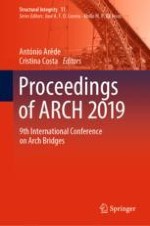2020 | OriginalPaper | Buchkapitel
The Advantages of Steel-Concrete Composite Girder in Half-Through Concrete-Filled Steel Tube Bowstring Arch Bridge
verfasst von : Fei Wu, Donghua Xiao, Jiancheng Yuan, Sheng Zhou, Zhicheng Tan, Zhongpeng Zou
Erschienen in: Proceedings of ARCH 2019
Aktivieren Sie unsere intelligente Suche, um passende Fachinhalte oder Patente zu finden.
Wählen Sie Textabschnitte aus um mit Künstlicher Intelligenz passenden Patente zu finden. powered by
Markieren Sie Textabschnitte, um KI-gestützt weitere passende Inhalte zu finden. powered by
